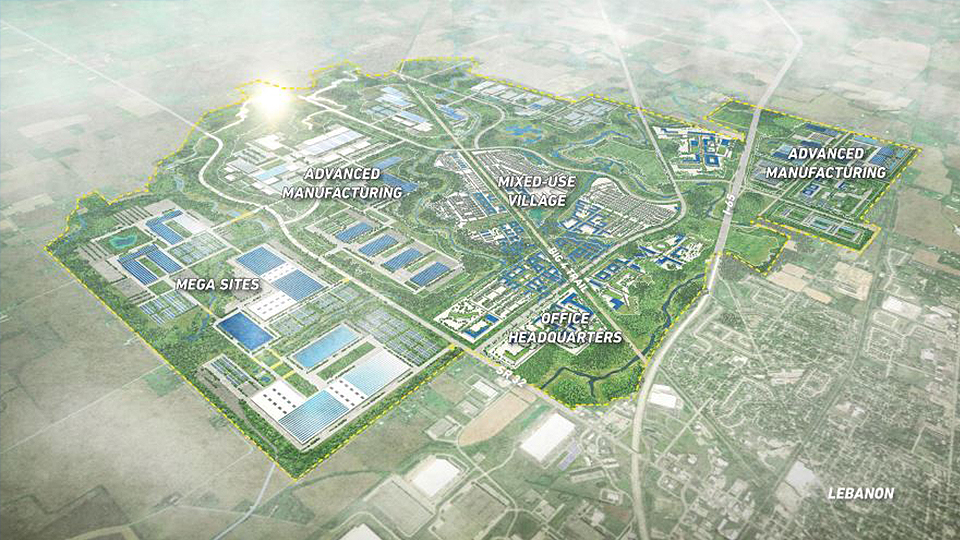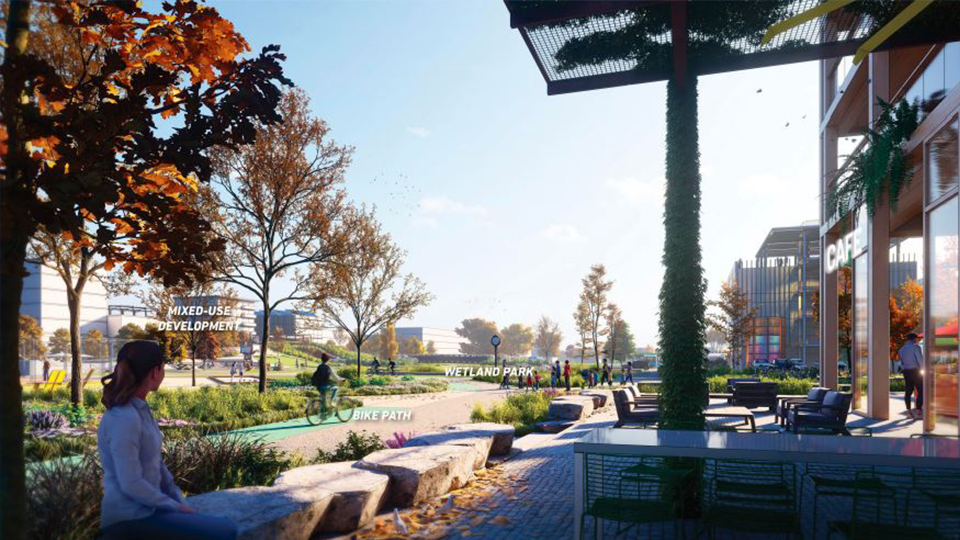State asks Lebanon to annex 5,225 acres for LEAP district
Subscriber Benefit
As a subscriber you can listen to articles at work, in the car, or while you work out. Subscribe NowThe state’s plans for a massive research and innovation park northwest of Lebanon continue to take shape.
The Indiana Economic Development Corp. and 43 Boone County landowners are asking the city of Lebanon to annex 5,225 acres of land for the LEAP Lebanon Innovation and Research District.
The area includes 122 separate parcels west of Interstate 65 that are bordered to the west by County Road 500 West, to the south by County Road 50 South and to the north by the Big 4 Trail. Landowners of about 60 smaller parcels in the area do not want to be annexed or have not received offers, according to documents provided by the city.
Lebanon Planning Director Ben Bontrager also asked the council to approve a new LEAP Development Plan District zoning classification south of the Big 4 Trail that would be used rather than a general industrial classification.
Bontrager said the city wants to be specific about the land uses at LEAP, which are expected to include manufacturing for aerospace products and parts, pharmaceuticals, electric vehicles and semiconductors, along with medical and diagnostic laboratories.
Areas to the north of the trail would be zoned single-family residential, which Bontrager said could be changed in the future.
The plan was introduced to the Lebanon City Council on Monday night. The city’s plan commission narrowly approved the annexation proposal by a 5-4 vote on Nov. 21.
If approved by the city council on Dec. 12, it would be the second phase of voluntary annexation for the LEAP site. Bontrager told the plan commission last week that LEAP will eventually take up about 11,000 acres.
The city in July annexed 1,396 acres for LEAP, which includes about 600 acres east of Interstate 65 where Eli Lilly and Co. plans to spend $2.1 billion to construct two manufacturing sites.
IEDC Executive Vice President David Rosenberg told the council on Monday that Lilly hopes to break ground on the first manufacturing plant in the first quarter of 2023.
He added that the state is “deep in conversations” with two companies—one that manufactures electronic vehicle batteries and another focused on micro-electronics—that are interested in building at LEAP.
Rosenberg said Indiana is looking to build in Boone County because it needs to compete with other states for high-tech jobs now and in the future.
“We’re looking at high-wage, high-growth companies, but what really set this off is we were losing deal after deal because they were going to other states that had the site-ready initiatives,” Rosenberg said. “They had funding from the legislature. They were going out buying land, zoning it, getting utilities and roadways there, and so it was very important that the state stepped into this game.”
A presentation by Rosenberg also provided an early glimpse of what LEAP could look like when it’s complete.
An overhead rendering from west-to-east showed areas titled “mega sites” that would be focused on industrial research and development, advanced manufacturing, a mixed-use village along the Big 4 Trail with housing and retail, office headquarters and more advanced manufacturing east of I-65.
Residents who oppose the LEAP district also shared their worries about the state’s plans in Boone County.
Michael Andreoli, an attorney representing the Boone County Preservation Group, whose members oppose the LEAP district, said his clients are concerned about the new zoning classification.
“The source of the objection is that this is being assigned to a classification that has been newly developed and newly implemented,” Andreoli said.
Other residents spoke about concerns they have about the loss of agricultural land, plans to pump in millions of gallons of water per day from the Wabash River, environmental issues and what it will mean for those who do not want to sell their land and be annexed.
“This is forever going to change our lifestyle,” Carrie Douglas said. “This is forever going to change the landscape.”


